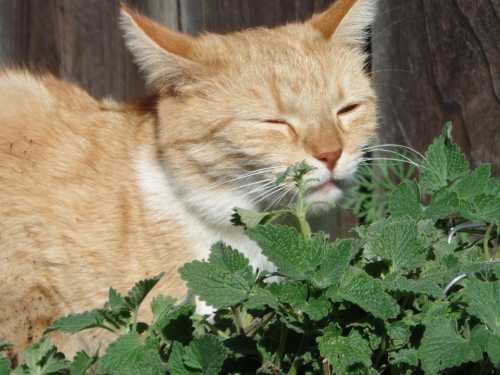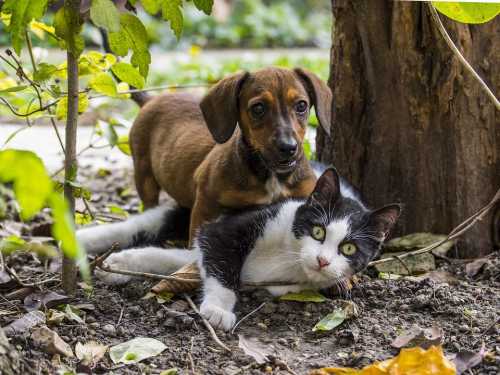
Among the many toys and accessories for cats, catnip (Nepeta cataria) occupies a special place. This plant from the mint family has won the hearts of many owners due to its effect on the behavior of pets. However, catnip is not just another way to entertain an animal, but a tool for improving its well-being, reducing stress and adapting to new situations. Below are the most important facts and practical advice for the responsible use of this natural remedy, informs Ukr.Media.
How is catnip different from other types?
The name itself sometimes causes some confusion. Catnip is a separate species of plant that contains the substance nepetalactone. It is this plant that affects cats, while the popular garden mint (Mentha piperita, Mentha spicata) does not cause a similar reaction, and in large quantities can even cause digestive upset. It is important to buy products based on Nepeta cataria and never replace it with other similar plants.
What forms does it come in?
- You can find catnip in the market in various forms:
- Fresh plant has the most concentrated aroma.
- Dried is convenient for storage and use, but effectiveness depends on quality.
- Sprays – contain nepetalactone extract, they are easy to apply to favorite places or toys.
- Toys with filler – ready to use, no need to sprinkle grass.
How exactly does catnip work on a cat?
When a cat smells nepetalactone, the areas of the brain that control emotions and behavior are activated. This often causes elation, playfulness, and a desire to roll over or rub their heads against objects. The effect usually lasts from 5 to 15 minutes, after which a period of insensitivity sets in, which can last up to an hour or more. This state is not an “addiction” – the body simply needs to restore sensitivity.
Why doesn't catnip work for everyone?
Not every cat reacts to mint. Genetic peculiarity determines that about a third of cats are completely indifferent to it. Also not prone to reaction are kittens under six months of age and elderly cats – the former have not yet formed the olfactory system, the latter it is less sensitive over time. This is absolutely normal and does not indicate health problems.
If your pet doesn't react to mint, there are alternatives, such as valerian root, silver vine (matatabi), or Tatar honeysuckle sticks. They are available in pet stores as dried herbs, sprays, or toys.
Are there risks or is it safe?
Under normal circumstances, catnip is harmless: the best option is to resort to olfactory contact. However, if a large amount is eaten, short-term discomforts such as vomiting or digestive upset are possible. Occasionally, excessive excitement, temporary aggression or, conversely, drowsiness occur.
Particular caution is recommended for pregnant and lactating females, as well as for animals with serious medical conditions or a tendency to aggression or hyperexcitability. In such cases, it is best to discuss the use of mint with a veterinarian.
How much and how often can you give?
For most cats, it is enough to use catnip 1-2 times a week. Overuse reduces the effectiveness: the cat simply stops responding due to a period of recovery of sensitivity to the smell. Optimally, offer catnip toys, small portions of dry grass (1-2 pinches) or sprays. Always remove the leftovers after playing to avoid eating excess.
Where and how to apply it for practical benefit?
Catnip is good not only for games, but also for solving behavioral problems:
- Using it in a carrier before a trip will help your pet calm down.
- Treating a scratching post or toy motivates the cat to use them instead of furniture.
- Low mobility is also corrected through games with mint.
- If you bring a new pet into your home or move, treating the bed or toys with mint will help it adapt and form positive associations with the new place.
Store mint in an airtight container in a cool, dark place. This will help preserve the aromatic properties.
Vigilance and observation are your allies
Every cat is different: some are delighted with mint, others are indifferent or even show an unexpected reaction. If you notice any worrying symptoms – vomiting, diarrhea, aggression, prolonged drowsiness – discontinue use and, if necessary, consult a veterinarian.
Therefore, catnip, when used wisely, becomes not only a source of joy for your pet, but also a real helper in matters of adaptation, play or stress relief. Always take into account individual characteristics and carefully observe the cat's reaction. It is a caring approach, supplemented by simple information, that allows you and your pet to get the most benefit and positivity from this unusual plant.





